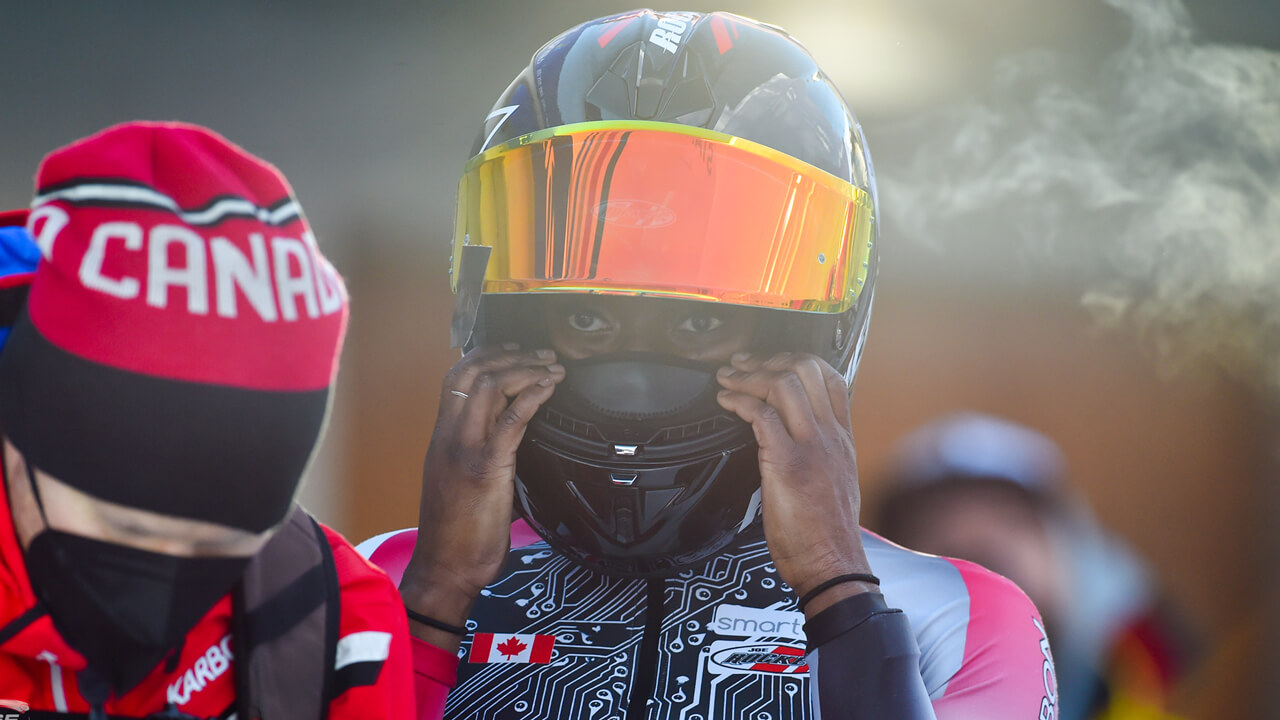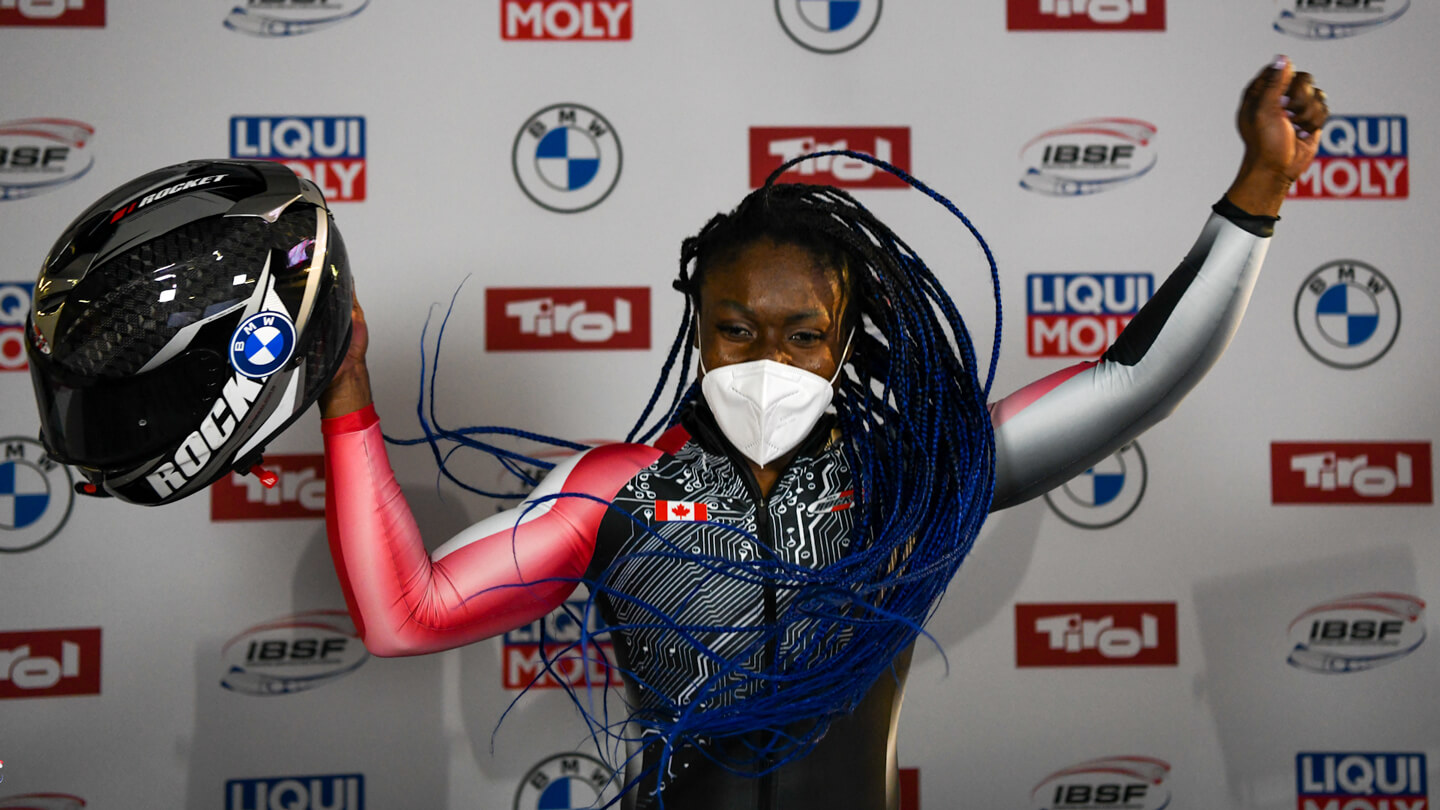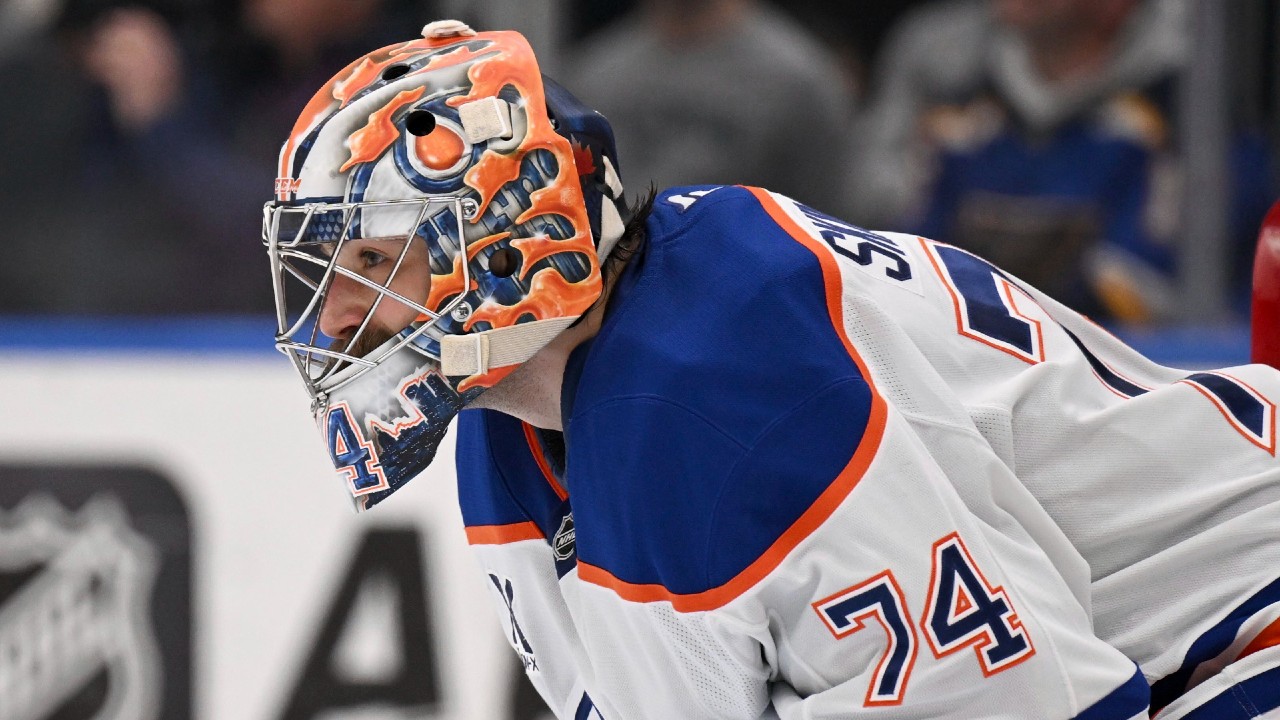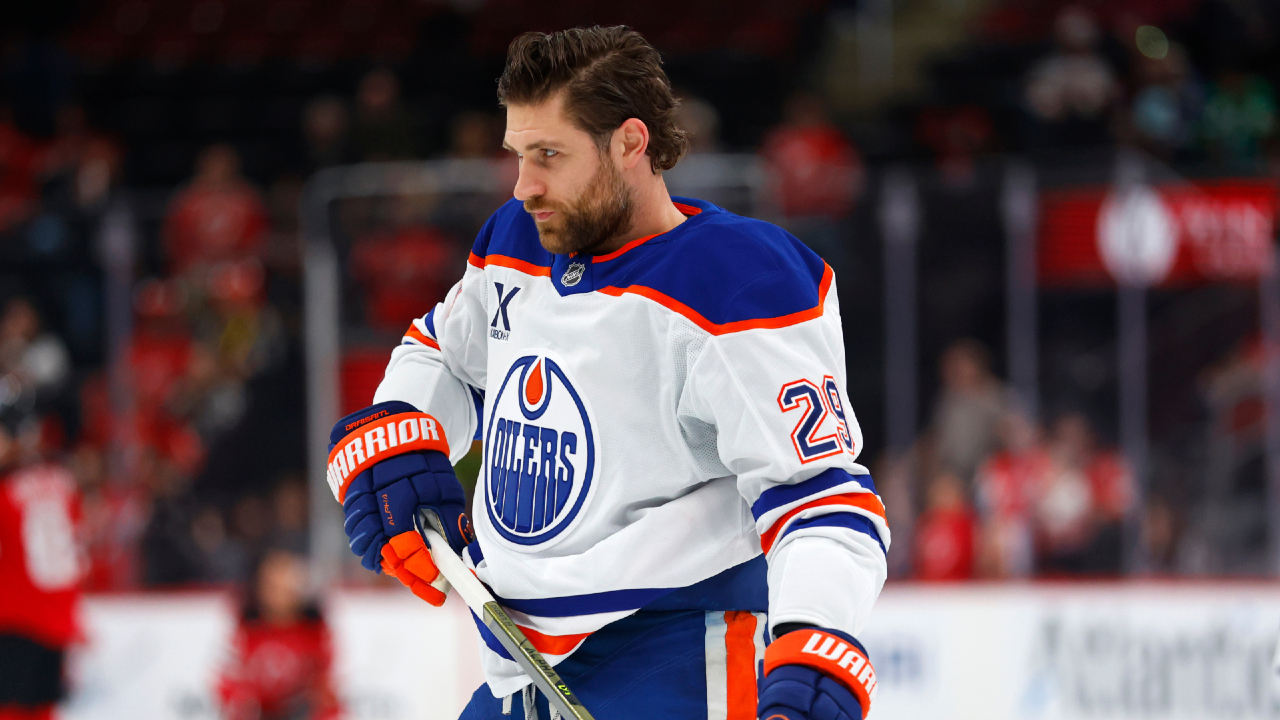
“A TORCH I’M HAPPY TO CARRY”

I
n 2010, Cynthia Appiah was a track athlete at York University who had given zero thought to the idea of ripping down an icy chute at the Winter Games. That all changed in an instant when Appiah saw another Black woman, Shelley-Ann Brown, earn Olympic silver for Canada in bobsleigh on home soil in Vancouver. She knew immediately that she wanted to do the same.
Twelve years later, Appiah is a medal favourite herself, and in monobob, the event making its Olympic debut in Beijing. The 31-year-old from Toronto will also pilot the two-woman event, along with brakewoman Dawn Richardson Wilson. Theirs is the first Black bobsleigh crew in Canadian Olympic history.
On the day she was officially named to Team Canada, Appiah spoke to Sportsnet about the importance of her historic crew, and the joys of representing both her Canadian and Ghanaian heritage. She discussed ways her sport needs to continue pushing for gender equity, and why Beijing feels like her first Winter Games experience even though it’s actually her second. And, the big Jeopardy! fan also shared some obscure facts that could come in handy at your next round of trivia.
SPORTSNET: Who gave you the nickname, “Cynthapaedia”?
CYNTHIA APPIAH: That was one of our driving coaches, Graham Richardson, and he made it up on the spot. He was like, “You’re like a walking encyclopaedia, Cynthapaedia!” And I was like, “Oh no, we’re not going with that are we?” [Laughs.] He calls me that from time to time. I, for some reason, seem to know so much about things and people will ask a question and I just happen to formulate the answer. Listen, it’s a blessing and a curse. It’s not as cool as you think it is [laughs].
That can’t be true. Any random bobsleigh facts you want to get off your chest?
Sure. This one is a little sad. I think it was the 1940s [Editor’s note: It was indeed exactly 1940], back when bobsleigh was still a five-person event. There was a woman [Katharin Dewey] that won the U.S. championships, she and four male brakemen. Then the following year the federation barred women from competing in bobsleigh. I was like, “Are you serious?” If you go to Lake Placid, New York, they have a museum at the track and it showcases that story about how this woman basically kicked the door down, said, “I’m going to outdo all of you,” and then they proceeded to thank her by barring her and every other woman from competing again.
Well, that’s brutal.
Maybe I should give you a happier tidbit [laughs]. Give me some time to think about it, and I’ll come up with a better one.
Thank you! On the plus side, these are the most gender equitable Games in history, so any good feelings around that?
Yeah, I’m always about gender equity and making sure that every female athlete has an equal opportunity at an Olympic medal. With the addition of monobob [only women compete in the event]it definitely does inch closer to that equity. [Men have two- and four-man events, while women have two-woman and monobob events]. There’s still a bit of the puzzle that’s missing, though. Right now, gender equity still has an unfair advantage toward the female pilots; the female brakewomen are out in the dark. They only get that two-woman race, [but]they still have to help with moving the monobobs to the line, polishing our runners, maintaining the sled. So for them to do double the work but only get half the chance at an Olympic medal? I don’t want to say it’s a disservice to the Olympic movement, but it’s disheartening to know they’re doing all this work. It’s become a thankless job at the end, where I, as the pilot, get to stand on the podium, but they don’t get to join with me.

What do you like about your partnership with Dawn, your brakewoman?
She’s someone I’ve had an eye on since the beginning of her career. She joined our sport after the last Olympic season, and at the beginning she kind of was written off because people thought she was too small, she was too timid, that she wouldn’t be able to withstand the rigours of a season or a bobsleigh ride. But she has continually proven every single person wrong and has done it with such grace and poise. No one would have thought four years ago that this skinny girl, at 50 kilos, was going to come in and become such a dominating force.
Her first year she was paired with a development pilot who crashed 15-odd times. And most people after the first or second time would be like, “I’m outta here.” But she kept on getting back in that sled and she showed [she was]something that’s very, very hard to teach and it’s a term we call a “pilot’s brakeman,” where they’re there to hype you up when you as a pilot are down. The natural leader on the team is usually the pilot, but sometimes you’ll have brakemen that’ll emerge, and they take over that role. It’s not that they’re usurping the pilot’s leadership, but they come in and they embody such maturity and an essence that’s hard to describe. She is that to a tee. Once I saw her getting back in that sled and trying to pump up her pilot at the time, get their motivation up, I was like, “Okay, I want that girl in my sled.” This year finally we were able to be paired together for the full season and I couldn’t be happier. She’s honestly the best person to have on a team.
And how rare is it to have two Black women in a sled together?
It’s pretty rare, unfortunately. For Canada it might be the first time, I believe, that we’ve ever had a pairing like that [Editor’s note: Bobsleigh Canada confirms it is]. I know in the States they’ve had that pairing for some time with Elana [Meyers] being the pilot. They’ve been able to have essentially a football roster full of phenomenal Black women come in and be a dominating force on the brakes. With Elana on the push bar and all these athletes on the brakes, that’s been a nice blueprint for them. I think we’re just kind of playing catchup right now, but it’s a torch that I’m very much happy to carry. And hopefully that will open up the door for more Black women to come into the sport, more Black men to come into the sport and become pilots, become brakemen, and pair up either with each other or with other athletes within our team, and really showcase the strength of having a diverse team for Canada.
Shelley-Ann Brown was your inspiration, right?
It’s one of those things where it’s hard to describe it in the moment, and then later on a term is created and you’re like: That’s exactly what it was. For me, watching Shelley-Ann compete in 2010 was getting to see myself, or seeing a future version of myself. To see someone like Shelley-Ann on TV at the Winter Games — something that, internally, I had believed Black people don’t do — that was the light switch that I needed to say, “Okay, anything is possible and I want to do that. I have to figure out how I get to where she is right now.” I was ready and willing to give up track and field at the moment to work towards bobsleigh, something that was completely new to me. I had no idea what I was getting myself into [laughs] but I just had this belief that it was going to work out.
And you tried bobsleigh yourself the next year?
Yeah, I went to a dryland camp that was hosted by the Ontario bobsled team at York University, which is where I went to school. Later, I went to Lake Placid to try my hand at the first driving school I’d ever been to, and the nerves were through the roof — like, I’m pretty sure they hit the stratosphere. But after I did my first run I was like, “Yep, this is it, I’m hooked. I’ve got to figure out a way to continue this.” I had a couple more years of university left, I was going to continue doing track and field, and I made sure that I gave it my all. I wasn’t going to half-ass it — oh, I don’t know if I can swear.
Oh, sure.
[Laughs.] I was still going to give my 100-per cent dedication to track, but once I graduated from university, it was all systems go: Focus on bobsleigh, however you’ve got to do it. Eat better, sleep better, train better, make sure you’re putting all your energy into making the bobsled team.
You’ll be competing in an event that didn’t exist when you made the national team. This is potentially a dumb question, because monobob means you’re alone in the sled. Are there any other differences between that race and the two-woman?
Oh no, not a dumb question at all. The differences are subtle, but they are there. The first thing anyone’s going to notice is the fact that, yeah, there’s only one person pushing, that same person is driving. We push from the back like a brakeman would, we don’t have a push-bar like we would on a two-woman sled. The monobobs are also a little smaller, by maybe 30 centimetres in terms of length, and they’re also just under 10 kilos lighter, which doesn’t sound like a lot, but when you’re pushing by yourself, it is. And the monobobs tend to be a little squirrely because there is no brakeman to help balance out and stabilize the back end, so you might see a lot of skids. Also, the sleds don’t carry as high in the corners, so they don’t get the same height and they don’t get the same speed.
You’ve been to the Olympics before, but competing on the stage will be new. What was your experience like in Pyeongchang, as an alternate?
It was… not fun. I tried to make the best of it. One of the things that helped me get through those Olympic Games was buddying up with the alternates from other teams, specifically GB and USA. The three of us became a rag-tag crew. We’d be able to vent, because the role of an alternate is such a hard role, and it’s hard to describe the emotions you go through unless you’ve been through it. I also had to be cognizant of the fact that I didn’t want to take away from my teammates who had been named to the Olympic team. I really felt trapped when I was around my teammates because I couldn’t emote the way I wanted to. When I was with my other spare friends, alternate friends [laughs], I was able to be myself, and those were the moments that I really cherish. Outside of that it was not fun.
Does this feel like your Olympic debut?
Yeah, 100 per cent. I know a lot of people within the sporting committee and outside of it are like, “You’re still an Olympian to me,” but it feels like lip service.
Did you consider leaving the sport after the last Olympics?
I was done before the Olympics were over. As soon as they named me an alternate I was like, “This is it. Once the Games are over, I will never see a bobsleigh again. I won’t watch it on TV.” I was just angry at the world. After we got through the Games, I talked to teammates and coaches and everyone was like, “It’s not time to throw in the towel just yet.” A couple of my coaches said, “You’re meant to be a bobsledder.” [Coach] Lyndon [Rush] in particular said, “Do you want to be saddled with, ‘what if?’ What if you give up now? What if you don’t give it another chance? What if next time you make it and you do well?”
So I sat at home and I really thought about it. I think Eeyore probably was happier than I was going into driving school [Editor’s note: Appiah went a couple weeks after she got home from Pyeongchang, having exclusively been a brakewoman to that point]. But it was a three-week camp and I had so much fun, and it allowed me to love the sport again — outside of the bureaucracy, the politics, loving the sport for what it is. I made a promise to myself that I would come back on my own terms, as a pilot, and I would dictate my own career. That’s what sold it for me.

Did you think at all about your presence in this sport and the importance of being somebody’s inspiration the way Shelley-Ann was yours?
At the time I didn’t think of it as such. I still was a relatively unknown athlete in the sport. I felt if I did leave, it wouldn’t make an impact at all. Now that I’ve got a little bit more publicity behind my name, I feel now I can be the Shelley-Ann Brown to the next generation, but I don’t think I was ready for that role, nor was I capable of executing that role properly in 2018.
Your Twitter profile features the Canadian flag, the Ghanaian flag and #BlackLivesMatter. What do those three things mean to you?
First and foremost, the Canadian flag, competing for a pretty awesome country. There are many flaws within it, but at the end of the day I’m so proud to put the Maple Leaf on my back and slide for Canada. The Ghanaian flag, that is my culture, that’s my people, that is the upbringing that I had. Even though I grew up in Canada, my parents instilled Ghanaian culture and traditions within me, and it’s something I’m super proud to be able to uphold. I speak one of the languages fluently with my mom and with my relatives, and my sisters and I are now trying to speak to each other with it so that we maintain the language and we don’t lose it. I’m so proud to be a Ghanaian-Canadian and I want to showcase that every which way I can. Last season I had my bobsled spikes painted, one side the Canadian flag and the other side the Ghanaian flag. I want to showcase that that’s who I am.
And then Black Lives Matter. I feel like last summer was such a pivotal moment for the world, because it finally dawned on so many people who I think had denied it for so long, it shined a light on a problem that we Black people have been speaking out about for so long, and have been ignored every step of the way. And when George Floyd died, so many people have died before him, but for some reason people gravitated toward his story the most. It was for me a wakeup call to be like, “Hey, I need to do my part to also use my voice and use my platform to showcase that Black lives do matter.” And I know there’s going to be somebody who’s going to be out there who’s going to try and “all lives matter” that statement or tell me this, that and the other, but I know my truth and I know my story and that’s enough for me. And for those who understand the plight of all Black Canadians and Black Americans and Black people around the world, they’re the ones that I’m talking to.
Have you encountered racism within the bobsleigh community?
I’ve never dealt with violent, overt racism, thankfully, and hopefully it stays that way — knock on wood. But you get the micro-aggressions every now and then. Unfortunately in this sport you kind of have to learn to let it roll off your shoulders. I would say in the last few years it hasn’t been as apparent. I think what’s happened in the last couple years really opened people up to what is going on in the world for Black people and Black athletes. Maybe some of them had that difficult conversation finally to atone for past things or own up to what they’ve done in the past. I think there’s still a lot of work to be done, but I’ve been fortunate enough to say I haven’t had any blatantly in-your-face racist acts towards me. I know it’s happened to others in the sport. It’s a very tough world to navigate and unfortunately there are players in this sport who seem to think negatively of some people because of their race.
I’m so sorry to hear that, but I think I speak for a lot of people when I say I’m thankful a role model like you exists in the sport. What’s your goal in Beijing?
Thank you. And it sounds so cheesy, but it’s really to have fun [laughs]. I’ve talked to a lot of Olympians who’ve competed in past Games, and the one thing they said that they’ve regretted is allowing the pressure to get to them. That’s one thing I’ve been working hard on these past four years is to try to let myself enjoy the moment, enjoy the process. Don’t let the highest of the highs cloud my memory and my judgement, and in the same breath, don’t let the lowest of the lows zap your energy by thinking too much on it. I just want to go in with a cool middle ground. I know what my cues are. For me, if I have the fastest pushes, I know I’ll do great. Regardless of the results, if I can push the fastest I can, I know it’ll be a good Games for me.
That’s your strength, right?
Yes, and Elana for sure is my biggest rival on the push, by far. I feel like we’re usually within a couple hundredths of each other. If I’m not in there with the fastest push, she’s a couple hundredths ahead of me. The rest of the field is very competitive, and where they get me is on the drive.
What do you think of this Beijing track?
We had a test event last October, and I finished third there [in monobob]. It’s a fun track. It’s a completely different concept to any other track out there. Some of the corners, you look at it and think of how you should drive them, and then you get on the track and figure out that, no, we actually do have to come up with a different plan of attack. It defies a lot of conventional thought as to how corners should be driven. So it makes it challenging and fun because it’s not hard like an Altenburg [Germany] or a Lake Placid track, where it’s just technically hard, but it’s not so easy like a Park City, where anybody can get down it, and it’s a matter of the fastest pusher gets to win. I like that it’s a combination of different technical parts, so it’s going to come down to the best driver and the best pusher that day.
What colour will your hair be?
I’m going to keep it red. Our team colours are red and white, and then being in China, their colour is red, and we’re around during Chinese new year. I’m going with red.
Thank you so much for your time, and best of luck at the Olympics.
Thank you. And my factual tidbit to end our call with: I don’t know if many people know this, but Adidas and Puma were started by two brothers, Adi Dassler and Rudi Dassler — Adi Dassler is how you get Adidas. Initially, they owned the same shoe factory, but as they were getting popular, they had a huge rift and they never spoke to each other again. They split the company in half, and so in their small town in Germany, Adi Dassler stayed with the original shoe factory, Rudi moved across town, and for the longest time that town had a huge divide. If you worked for Adi you were on one side of town; if you worked for Rudi you were on the other and there was a huge fight going. You did not co-mingle if you worked for the other shoe factory.
Wow, you really brought it. Thank you.
[Laughs]. You’re welcome. That all usually starts with me looking something up and then going down a rabbit hole and then three hours later going, “Wow, I’ve learned a lot,” and “Why am I still looking at my computer?”
Viesturs Lacis/IBSF (3)





